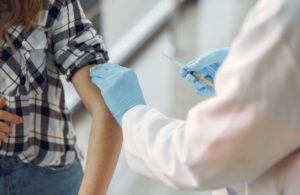
Image courtesy of Pexels
The likely timeline for vaccinating a large share of the U.S. public has tightened recently. On Tuesday, President Biden promised enough COVID-19 vaccine would be available for all Americans by the end of May.
But while increases in vaccine production can address the current vaccine shortage, vaccine hesitancy will likely curb vaccination efforts in the coming months, according to Philipp Rosenbaum, a senior healthcare analyst at GlobalData. “With increases in vaccine production from Pfizer/BioNTech and Moderna, a newly authorized vaccine from Johnson and Johnson, and a manufacturing partnership between J&J and Merck & Co., confidence in reaching the goal is high.”
Indeed, the proportion of the public intending to receive the vaccine has increased from 60% to 69%, according to data from the Pew Research Center.
But many Americans don’t want the vaccine. Almost one-quarter of unvaccinated adults have no plans to get a COVID-19 vaccine, according to recent data from the U.S. Census Bureau. One out of 10 say they definitely won’t get the vaccine.
Approximately three out of 10 healthcare workers are also reluctant to get vaccinated, according to data from the Kaiser Family Foundation.
The vaccine hesitancy could drive further mutations of SARS-CoV-2, “potentially posing a risk to vaccinated people if current vaccines are less protective against these variants,” Rosenbaum said.
Vaccinating children could help stem the spread of the virus, but no vaccine is currently authorized for people under 16 years of age. While pediatric trials are underway, data from those studies is likely months away.
Still, vaccinating a large proportion of high-risk adults could curb COVID-19-related hospitalizations and deaths. “Furthermore, vaccinating healthcare and essential workers, teachers and other groups that have frequent contact with many people will help reducing the impact of COVID-19 on the healthcare system and the economy in general,” Rosenbaum said.
But to enable broad vaccination rates, “more outreach and awareness campaigns are needed to reach the population segments that remain sceptical of COVID-19 vaccines by the time everybody who wants the vaccine has received it,” Rosenbaum concluded.